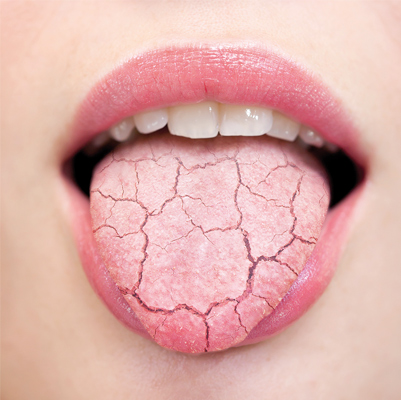Pharyngitis
Pharyngitis
Overview
Pharyngitis is the inflammation of the pharynx, the back of the throat, commonly known as a sore throat. It can cause throat roughness, pain, and difficulty swallowing.
Pharyngitis is one of the most common reasons for doctor visits and often leads to missed work or school. It occurs more frequently during colder months and can be caused by:
-
Viral infections (most common, including cold and flu viruses)
-
Bacterial infections (e.g., Streptococcus species)
-
Allergies or irritants in some cases
Identifying the underlying cause is important for proper treatment, as bacterial infections may require antibiotics while viral cases do not.
Symptoms
Symptoms typically last 2–5 days and may include:
-
Sore throat or painful swallowing
-
Sneezing
-
Runny nose
-
Headache
-
Cough
-
Fatigue or general weakness
-
Body aches
-
Chills
-
Fever (low-grade with a cold, higher-grade with flu)
Effects
-
Discomfort and pain that can interfere with eating, drinking, and speaking
-
Temporary loss of productivity from school or work
-
Possible spread of infection to others if caused by a contagious virus or bacteria
-
Rare complications (mainly from bacterial causes) such as:
-
Tonsillitis
-
Peritonsillar abscess
-
Rheumatic fever (from untreated strep infection)
-
Treatment
1. Symptomatic Care (Viral Pharyngitis):
-
Rest and adequate hydration
-
Warm saltwater gargles to soothe the throat
-
Over-the-counter pain relievers (acetaminophen, ibuprofen)
-
Humidifiers or steam inhalation to reduce dryness
2. Antibiotic Therapy (Bacterial Pharyngitis):
-
Prescribed antibiotics if strep or other bacterial infection is confirmed
-
Complete the full course even if symptoms improve
3. Supportive Measures:
-
Avoid irritants such as smoke, alcohol, or very spicy foods
-
Use lozenges or throat sprays for temporary relief
-
Practice good hygiene (hand washing, covering mouth when sneezing) to prevent spread
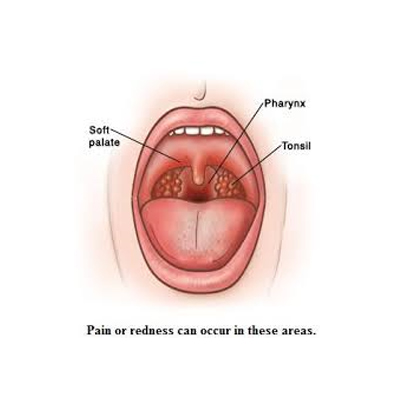
Retropharyngeal Abscess
Retropharyngeal Abscess
Overview
A retropharyngeal abscess is a serious bacterial infection that develops in the space behind the throat (the retropharyngeal space). It often begins in the lymph nodes of the throat, especially in children under eight years old, but it can also affect older children and adults.
This infection can progress rapidly and may lead to life-threatening complications if not treated promptly.
Symptoms
Common signs and symptoms of a retropharyngeal abscess include:
-
Difficulty breathing or noisy breathing (stridor)
-
Difficulty swallowing (dysphagia)
-
Painful swallowing
-
Drooling
-
Fever
-
Cough
-
Severe throat pain
-
Neck stiffness or swelling
-
Neck muscle spasms
Effects
If untreated, a retropharyngeal abscess can lead to:
-
Airway obstruction, which can be life-threatening
-
Sepsis (blood infection)
-
Spread of infection to surrounding tissues, including the mediastinum (chest)
-
Difficulty eating and drinking, leading to dehydration and malnutrition
-
Permanent neck or tissue damage
Treatment
Treatment requires urgent medical attention and typically includes:
-
Airway management
-
In severe cases, intubation may be necessary to ensure breathing
-
-
Antibiotic therapy
-
Intravenous antibiotics targeting common bacteria causing the infection
-
-
Surgical drainage
-
Incision and drainage of the abscess if it is large or not responding to antibiotics
-
-
Supportive care
-
Pain relief, hydration, and monitoring for complications
-
Early recognition and treatment are crucial to prevent life-threatening complications.
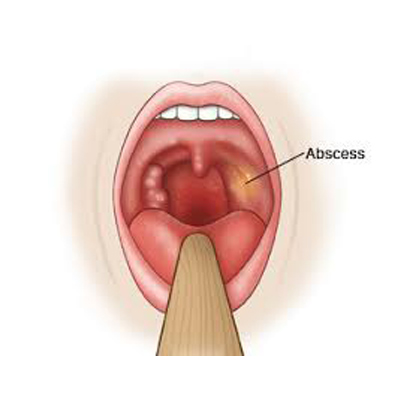
Spasmodic Dysphonia
Spasmodic Speech Disorder (Spasmodic Dysphonia)
Overview
Spasmodic speech disorder, also known as spasmodic dysphonia, is a neurological condition that affects your speech by causing involuntary spasms of the muscles in the vocal cords.
-
These spasms disrupt the airflow from the lungs, which normally vibrates the vocal cords to produce sound.
-
The condition can be misdiagnosed as another speech problem or mistaken for normal age-related voice changes.
-
It typically worsens over time, but does not affect overall intelligence or understanding.
Symptoms
The main symptom is involuntary movement or spasm of the vocal cord muscles, leading to:
-
Strained, broken, or interrupted speech
-
Words that are dragged out or staccato-like
-
Hoarse, breathy, or whispery voice
-
Feeling of insufficient air when speaking
-
Voice may sound tight or forced
Effects / Complications
-
Difficulty communicating effectively in social or professional settings
-
Frustration, anxiety, or embarrassment due to speech difficulties
-
Avoidance of social interaction or public speaking
-
Possible depression or lowered self-esteem
Treatment
1. Voice Therapy
-
Work with a speech-language pathologist
-
Techniques to reduce strain on vocal cords and improve clarity
2. Botulinum Toxin (Botox) Injections
-
Injected directly into the vocal cords to weaken overactive muscles
-
Often the most effective treatment for symptom relief
-
Effects are temporary and require repeated injections
3. Medications
-
Some neurological medications may help in mild cases
-
Typically used in combination with therapy
4. Surgery
-
Rarely needed, but vocal cord surgery may help in severe cases
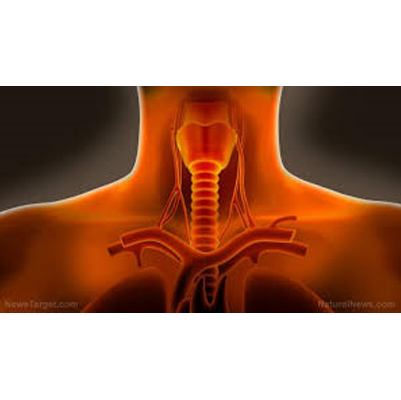
Swelling Lymph Nodes
Gland Swelling (Swollen Lymph Nodes)
Overview
Gland swelling usually refers to the enlargement of lymph nodes, which are small, rounded or bean-shaped clusters of lymphoid tissue enclosed in a capsule.
-
Lymph nodes are located throughout the lymphatic system of the body.
-
They filter lymph fluid and store immune cells that help detect and fight infections, bacteria, or even cancer cells.
-
Lymph nodes are regional, meaning each cluster corresponds to a specific body area and reflects abnormalities in that area.
-
Common sites of noticeable swelling include:
-
Behind the ears
-
Neck
-
Groin
-
Under the chin
-
Armpits
-
Swollen lymph nodes often indicate that the body is fighting an infection or other medical condition.
Symptoms
Symptoms of swollen lymph nodes include:
-
Localized pain in the affected area
-
Swelling or enlargement of the gland
-
Tenderness or discomfort when touched
-
Warmth in the area
-
Fever (if associated with infection)
-
Sometimes, night sweats or unexplained fatigue
Effects / Complications
If left unchecked, swollen lymph nodes may indicate or lead to:
-
Spread of infection if bacterial causes are untreated
-
Chronic inflammation
-
Abscess formation in rare cases
-
Underlying serious conditions like lymphoma or other cancers
-
Persistent swelling may interfere with mobility or cause discomfort in the affected region
Treatment / Management
1. Home Care (for mild swelling due to infection):
-
Apply warm compresses to the swollen area to reduce discomfort
-
Rest and stay hydrated
-
Over-the-counter pain relievers like acetaminophen or ibuprofen
-
Treat any underlying cold, flu, or mild infection
2. Medical Treatment (for severe or persistent swelling):
-
Antibiotics if caused by a bacterial infection
-
Antiviral medication if caused by a viral infection
-
Biopsy if swelling persists without infection to rule out cancer
-
Treatment of underlying conditions such as autoimmune disorders
3. Preventive Measures:
-
Maintain good hygiene
-
Avoid exposure to contagious infections
-
Regular medical checkups for persistent or unexplained lymph node enlargement
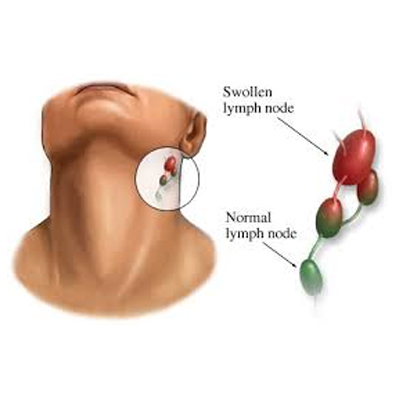
Thyroid
Thyroid Gland Overview
The thyroid gland is a butterfly-shaped organ located at the base of your neck, just below the Adam’s apple. It plays a crucial role in regulating metabolism and controlling how your body uses energy.
Functions of Thyroid Hormones
Thyroid hormones regulate vital body functions, including:
-
Breathing
-
Heart rate
-
Central and peripheral nervous systems
-
Body weight
-
Muscle strength
-
Menstrual cycles
-
Body temperature
-
Cholesterol levels
-
And many other metabolic processes
Anatomy of the Thyroid Gland
-
Size: About 2 inches long
-
Location: In front of the throat, below the thyroid cartilage
-
Structure:
-
Two lobes on either side of the windpipe
-
Connected by a tissue strip called the isthmus (some people may lack an isthmus and have two separate lobes)
-
How the Thyroid Works
-
The thyroid is part of the endocrine system, a network of glands that produce, store, and release hormones into the bloodstream.
-
Thyroid hormones are made using iodine from food and help regulate metabolism throughout the body.
-
The gland primarily produces two key hormones:
-
Triiodothyronine (T3)
-
Thyroxine (T4)
-
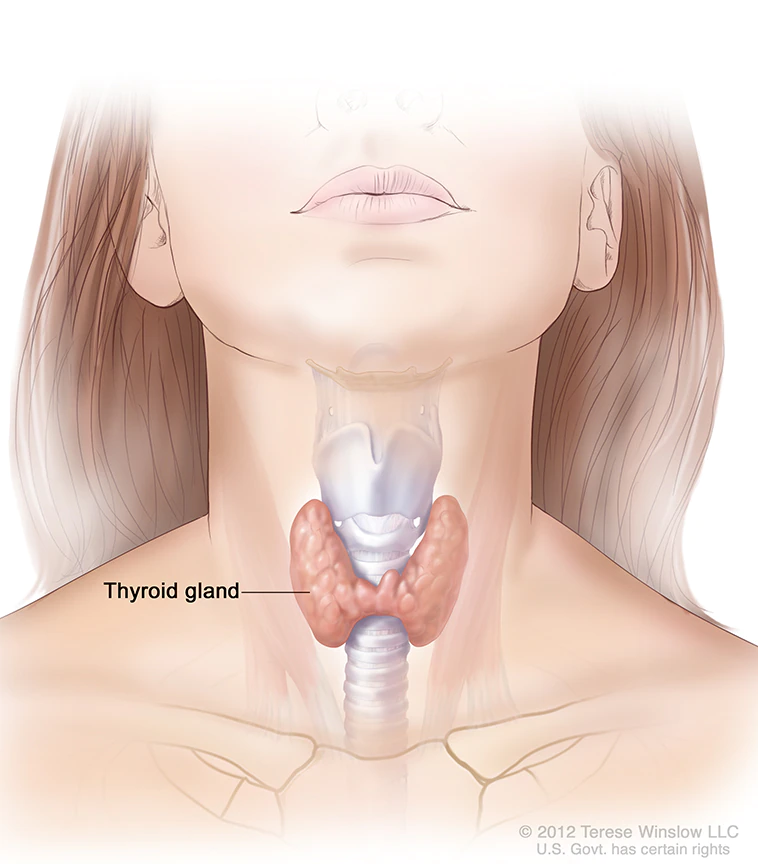
Xerostomia.
Xerostomia (Dry Mouth)
Overview
Xerostomia, or dry mouth, occurs when the salivary glands do not produce enough saliva to keep the mouth moist.
Common Causes:
-
Side effect of certain medications
-
Aging
-
Radiotherapy for cancer
-
Less commonly, conditions directly affecting salivary glands
Role of Saliva:
-
Neutralizes acids produced by bacteria
-
Limits bacterial growth
-
Washes away food particles
-
Aids in chewing, swallowing, and tasting food
-
Contains enzymes that help digestion
Dry mouth can range from a mild inconvenience to a condition significantly affecting oral health, overall health, and quality of life.
Symptoms
People with xerostomia may notice:
-
Dryness or a sticky sensation in the mouth
-
Thick or stringy saliva
-
Bad breath
-
Difficulty chewing, speaking, or swallowing
-
Dry or sore throat, hoarseness
-
Dry or grooved tongue
-
Altered sense of taste
-
Problems wearing dentures
Treatment / Management
-
Address the underlying cause (e.g., change medications if possible)
-
Use saliva substitutes or stimulants
-
Stay hydrated, sip water frequently
-
Practice good oral hygiene to prevent tooth decay and gum disease
-
Avoid alcohol, tobacco, and caffeine which worsen dryness
-
Sugar-free gums or lozenges to stimulate saliva production
